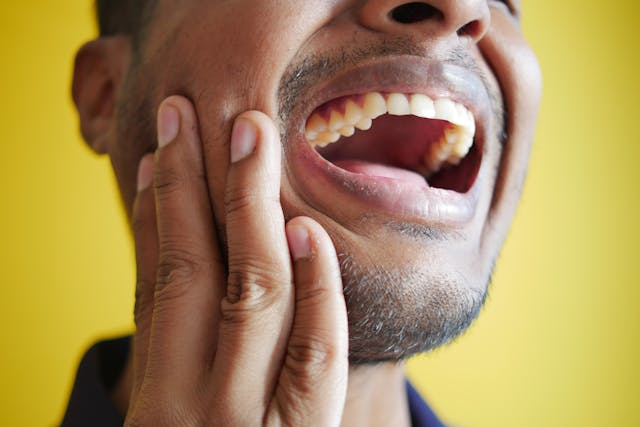 ActiveCare Physical Therapy, PC
ActiveCare Physical Therapy, PC
29 West 38th Street
Suite 601
New York, NY 10018

Understanding Temporomandibular Joint (TMJ) Disorders and Physical Therapy Solutions
Temporomandibular joint (TMJ) disorders can be painful, frustrating, and disruptive to daily life. Affecting the jaw joint and surrounding muscles, TMJ disorders may cause jaw pain, headaches, clicking or popping sounds, and difficulty chewing or speaking. Fortunately, physical therapy offers non-invasive, effective solutions for managing and treating TMJ dysfunction. In this post, we’ll break down what TMJ disorders are, their causes and symptoms, and how physical therapy can help restore comfort and function.

What is a TMJ Disorder?
The temporomandibular joints connect your jawbone to your skull on both sides of the face, just in front of the ears. These joints play a critical role in everyday activities like speaking, chewing, and yawning. TMJ disorders, often referred to as TMD, occur when there’s dysfunction in the joint or surrounding muscles, leading to pain, limited motion, or joint sounds.
Common Causes of TMJ Disorders
TMJ disorders may develop from a variety of factors, including:
- Teeth grinding or clenching (bruxism): Places excessive pressure on the joint and surrounding muscles.
- Poor posture: Especially forward head posture, which can affect jaw alignment and tension in the neck and shoulders.
- Trauma or injury: Direct impact to the jaw or head can result in joint damage.
- Arthritis: Both osteoarthritis and rheumatoid arthritis can affect the TMJ.
- Stress: Emotional stress can lead to jaw clenching and increased muscle tension.
Symptoms of TMJ Dysfunction
TMJ disorders can present a range of symptoms that vary in intensity and duration. Common signs include:
- Jaw pain or tenderness
- Clicking, popping, or grinding sounds during jaw movement
- Limited jaw movement or locking
- Facial pain or soreness
- Earaches or a sensation of fullness in the ears
- Headaches, often around the temples
- Neck and shoulder tension or stiffness
How Physical Therapy Helps TMJ Disorders
Physical therapy is a safe, non-invasive, and effective approach to treating TMJ disorders. A licensed physical therapist will perform a thorough evaluation to assess jaw mobility, posture, muscle tension, and any contributing factors. Based on the findings, they’ll develop a customized treatment plan that may include:
1. Manual Therapy
Hands-on techniques, such as soft tissue massage and joint mobilizations, help reduce muscle tightness, improve joint mechanics, and relieve pain around the jaw, neck, and shoulders.
2. Postural Correction
Since poor posture can contribute to TMJ symptoms, therapists work on improving head, neck, and shoulder alignment through targeted strengthening and posture education.
3. Therapeutic Exercises
Exercises are prescribed to increase jaw mobility, strengthen weak muscles, and reduce compensatory movement patterns. These may include controlled jaw opening, chin tucks, and resisted jaw movements.
4. Relaxation Techniques
Stress is a known trigger for TMJ symptoms. Therapists often incorporate diaphragmatic breathing, muscle relaxation, and mindfulness strategies to reduce tension and prevent clenching.
5. Education and Self-Management
A crucial component of physical therapy is teaching patients how to manage their symptoms at home. This includes guidance on posture, sleeping positions, avoiding harmful habits (like gum chewing), and applying heat or ice as needed.
Who Can Benefit from Physical Therapy for TMJ?

Physical therapy is suitable for most people experiencing TMJ-related symptoms, whether due to muscle tension, joint misalignment, or referred neck pain. It is especially helpful for those who:
- Have chronic jaw or facial pain
- Experience clicking or locking in the jaw
- Suffer from frequent headaches or ear pain without infection
- Clench or grind their teeth
- Want to avoid or delay surgical intervention
Understanding Temporomandibular Joint (TMJ) Disorders and Physical Therapy Solutions: Conclusion
TMJ disorders can interfere with daily activities and quality of life, but physical therapy offers a proven path to relief. By addressing the root causes—whether they be muscular, postural, or stress-related—physical therapy helps reduce pain, restore normal jaw function, and improve long-term comfort.
If you’re struggling with jaw discomfort or suspect you have a TMJ disorder, don’t wait—consult with a skilled physical therapist at ActiveCare Physical Therapy. We specialize in TMJ dysfunction.
ActiveCare Physical Therapy™
29 West 38th Street, Suite 601
New York, NY 10018
Phone: (212) 777-4374
Email: staff@bestptnyc.com
Website: https://activecarephysicaltherapy.com
